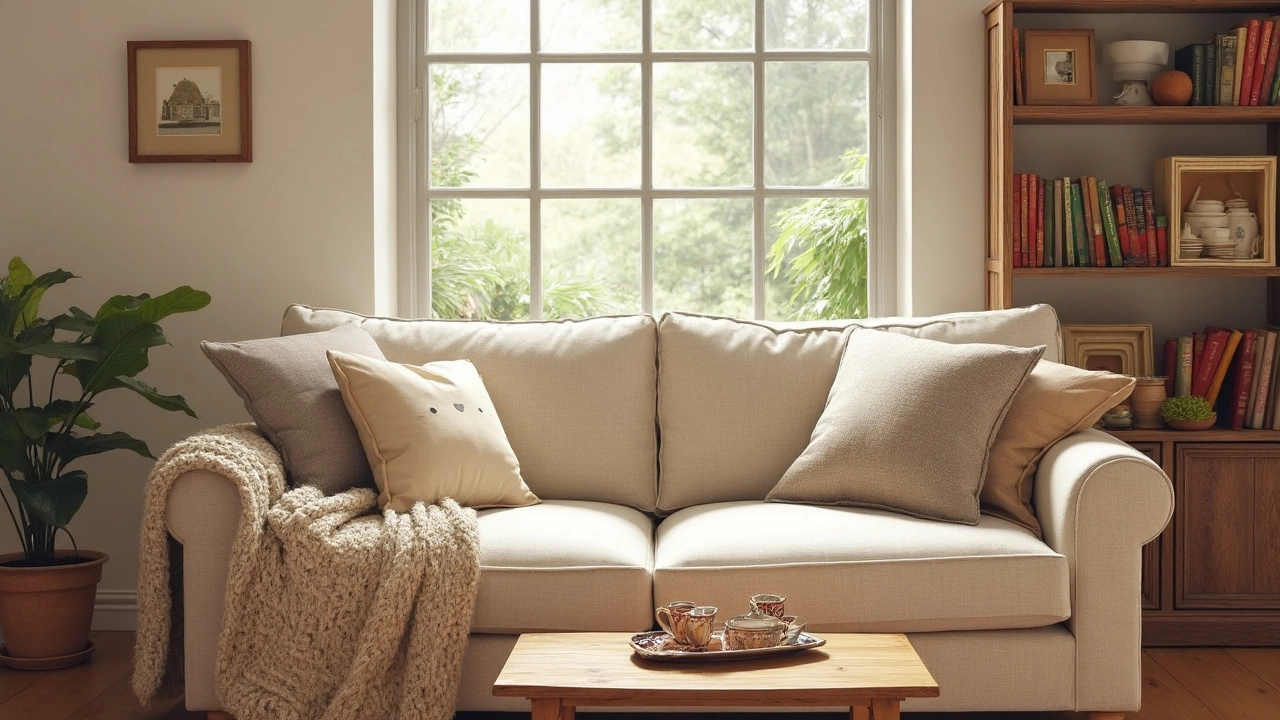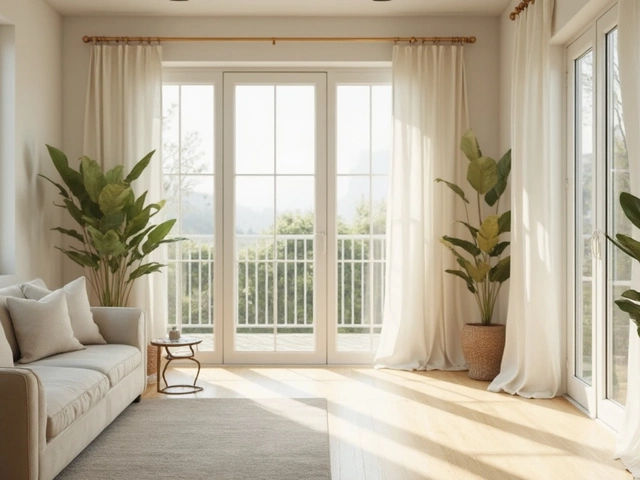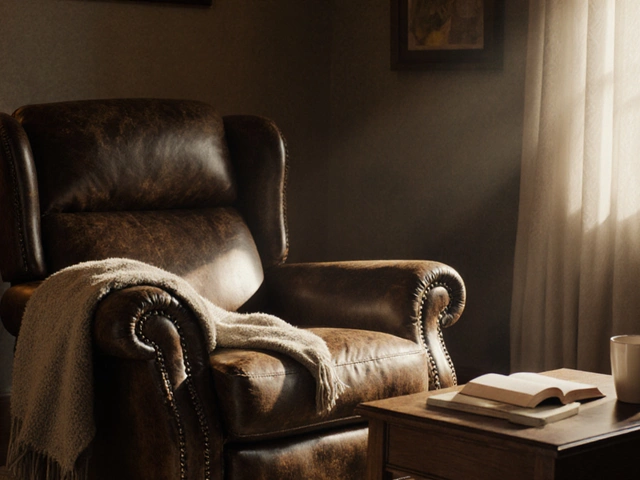So, you’re eyeing that budget-friendly sofa and wondering how long it will last. Well, you're not alone! Cheap sofas are a hit because they save cash, but let's be real—not all of them are made to stand the test of time. Usually, a low-cost sofa might last anywhere from 2 to 5 years if you're lucky. Seems short? Maybe, but it fits the bill for someone not planning to keep it forever.
What makes a sofa crap out sooner rather than later? The materials, my friend. Inexpensive materials might mean less durability. Think thin fabric or low-quality foam. Plus, the construction can be shaky. You don’t want something that wobbles like a Jenga tower, right?
Nodding along? Awesome! Because, even if you're on a budget, there's hope. Simple tricks can squeeze some extra time out of your sofa. Rotate those cushions, avoid jumping on it like it's a trampoline, and do some light maintenance. It's not rocket science, but it works wonders.
- Understanding Cheap Sofa Lifespan
- Factors Affecting Sofa Durability
- Tips to Extend Your Sofa's Life
- Choosing the Best Cheap Sofa
Understanding Cheap Sofa Lifespan
Ever bought a cheap sofa and questioned its durability? You’re not alone. Typically, affordable couches don’t linger as long as their pricier pals. But, that’s okay if you know what you’re getting into. So, how long should you expect that budget beast to last? Realistically, anywhere between 2 and 5 years. Now, there's some wiggle room here based on a few key points.
First off, the materials matter a ton. Think about it—cheap fabric can wear down with just a few Netflix marathons. Low-cost sofas might use synthetic fibers which can fray or stain more easily. As for the frame, instead of solid wood, you're often looking at particleboard. It's lighter on the wallet but also less sturdy over time. Nobody wants to hear a crunch when they sit down, right?
Then, there’s the construction. A well-put-together sofa will naturally last longer. If you’re buying from a place known for fast furniture, keep in mind that the production could be a tad rushed. Look out for signs of weak joints or wobbly arms when you’re shopping.
Environmental factors play a part too. Frequent moves, kids jumping around, or pets scratching up the fabric can really take a toll on your couch. Even how you care for it counts. A little regular maintenance can give you more time before it waves the white flag.
Finally, let's not forget your personal needs. If you’re someone who loves redecorating or knows a move is on the horizon, a budget-friendly sofa might be just the ticket. It’s all about matching your lifestyle with your choice of furniture.
| Factor | Impact on Lifespan |
|---|---|
| Material Quality | High |
| Construction Type | Medium |
| Usage | High |
| Care & Maintenance | Medium |
Factors Affecting Sofa Durability
So, what exactly makes one cheap sofa last longer than another? It's all in the details, my friend. Here are the biggies that really make a difference in how long that couch will stick around.
Material Quality: Most budget sofas are made with synthetic materials. The thinness and type of fabric can affect wear and tear. Polyester blends are common but can attract and hold onto stains. Look for tightly woven materials if you want something resilient.
Frame Construction: This is the backbone of your sofa, literally. Hardwood frames are durable but rare in the low-cost category. More often, you’ll find plywood or particleboard, which are not as strong. Make sure the joints are properly glued and reinforced.
Cushion Filling: The fluffier, the better, right? Not always. Foam is the go-to stuffing for cheap sofas, but low-density foam will lose shape quickly. Look for at least medium-density foam to get some decent longevity.
Assembly Quality: Ever notice how some furniture seems to wobble over time? It’s all in how it’s put together. Inspect the seams and corners. Staples and nails alone won't cut it; look for screws and brackets that hold everything nice and tight.
Now, let's get a bit nerdy with some numbers:
| Component | Expected Lifespan (Years) |
|---|---|
| Frame (Plywood) | 2-3 |
| Frame (Particleboard) | 1-2 |
| Fabric | 3-5 |
| Foam Cushion | 1-3 |
These are just ballpark figures but give you an idea of what to expect. When shopping next time, remember, it's not just about looks; the stuff underneath matters just as much. Pick wisely!

Tips to Extend Your Sofa's Life
Alright, you've snagged a cheap sofa that fits your budget—congrats! But how do you make sure it sticks around a bit longer? A few tweaks here and there can really work wonders.
First off, location matters! Keeping your sofa away from windows can protect it from harsh sunlight that fades the fabric. Sun damage isn't pretty and can age even the best sofas. Also, try moving it away from heat sources like radiators which can dry out and weaken materials.
Next, you know there's nothing quite like kicking back on the couch with a snack, right? Just watch those crumbs! Regular vacuuming is huge. It prevents dirt and food particles from causing more wear and tear than you'd like.
- Rotate your cushions often. This might sound basic, but flipping them regularly can distribute wear more evenly, keeping them plumper and comfier for longer.
- Avoid the trampoline effect—jumping isn't your sofa's friend. Excessive weight and impact can bust seams and make cushions flat faster than you can say 'oops.'
- Speaking of cushions, if they're getting saggy, trust me, foam inserts can be a lifesaver and not too costly either!
Now, if your sofa comes with a slipcover (lucky you!), that's an added layer of protection. Slipcovers can be tossed in the wash, swapping them keeps your sofa looking fresher without much hassle.
One last trick: furniture pads under the legs can stop unnecessary movement and wobbling. Plus, it saves your floors from scratches too, so it's a win-win!
Staying on top of these small steps means your budget sofa might just surprise you with how long it sticks around, saving you even more in the long run.
Choosing the Best Cheap Sofa
Looking for a cheap sofa but don't want to compromise too much on quality? It's all about knowing what to look for and keeping your expectations real. First, take a good look at the frame. Hardwood frames like pine or plywood are preferable for longer durability, even in budget models. Avoid sofas with frames made from particleboard or plastic—they’re the type that might not last long.
Another tip is to check out the support structure. Drop by the store and give that sofa a sit test. If it sags like a tired mattress, it's likely a no-go. Opt for those with sinuous springs if possible. These are often used in lower-cost options and can offer decent support without breaking the bank.
When it comes to cushions, foam is usually the go-to for cheaper options. It's alright, but if you can find a sofa with foam wrapped in fiber, it's like finding an extra cookie at the bottom of the jar—a nice bonus. This combo can keep the cushions comfy and less likely to turn flat over time.
- Fabric matters: Look for upholstery that’s tightly woven. Polyester or microfiber blends are good starter choices, which balance cost and longevity.
- Style preferences: Stick to neutral colors and simple designs. These tend to stay in fashion longer and won't force you to redecorate your entire room next season.
Worried about how to find these budget-friendly treasures? Do a bit of homework. Read reviews, ask about warranty options, and if possible, see the piece in person before purchasing online. Remember, the aim is to get a budget sofa that doesn’t look or feel like one.







